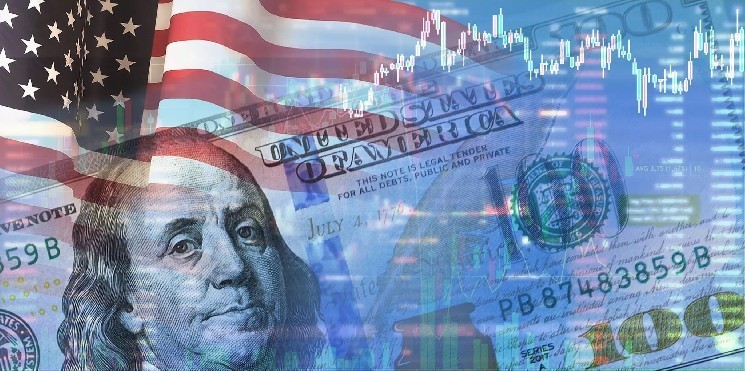Nobel Laureate Paul Krugman Warns of “Abnormal” U.S. Economic Landscape
Distinguished Economist Points to Unprecedented Divergence in American Economy
In a striking assessment of America’s current economic condition, Nobel Prize-winning economist Paul Krugman has declared that the United States economy now exists in “an abnormal state in many respects,” highlighting growing concerns about economic stability despite seemingly positive headline figures. This evaluation, published on his personal Substack platform, offers a sobering perspective from one of the world’s most respected economic voices at a time when policymakers and citizens alike struggle to make sense of contradictory economic signals.
“The US economy is currently moving away from normal functioning on many levels,” Krugman wrote, establishing a framework for understanding the unusual economic dynamics that have emerged in the post-pandemic era. His analysis comes at a particularly challenging moment for economic forecasting, as he noted that the recent government shutdown delayed the release of September’s employment report, leaving policymakers operating with what he describes as “partial blindness.” This data disruption compounds the difficulty of navigating an economy that defies conventional patterns and historical precedents, creating a dangerous information vacuum for those tasked with guiding economic policy.
Three Critical Abnormalities Reshaping the Economic Landscape
Krugman’s analysis identifies three fundamental abnormalities distorting the American economic landscape. First, he points to what he terms “sharp polarization” across economic sectors. While artificial intelligence and related technological fields experience explosive growth and investment, traditional sectors of the economy remain stagnant, creating an unprecedented divergence in economic vitality. This sectoral divide represents a fundamental shift from traditional economic cycles where growth tends to be more broadly distributed across industries, suggesting structural rather than cyclical economic challenges.
The second abnormality Krugman highlights is what he characterizes as an “employment freeze” — a labor market paradox where mass layoffs remain largely absent, yet job seekers face mounting difficulties securing employment. This unusual pattern disrupts traditional unemployment dynamics, creating a situation where official unemployment statistics might appear reasonably healthy while masking significant underlying challenges. Job seekers, particularly those transitioning between positions or entering the workforce, encounter a labor market that appears simultaneously tight and inaccessible, defying conventional economic models that would suggest greater mobility in a robust economy.
K-Shaped Recovery Intensifies Economic Inequality
Perhaps most troubling in Krugman’s assessment is his identification of a “K-shaped growth” pattern that has become increasingly pronounced in recent years. This economic trajectory, where prosperity and hardship diverge along socioeconomic lines, manifests as technology-driven growth primarily benefiting higher-income segments of society while middle and lower-income households face escalating economic pressures. AI-related investments generate substantial economic activity reflected in positive GDP figures, yet this growth fails to translate into broadly shared prosperity, instead intensifying existing inequality patterns.
“[The U.S. economy is] one that is experiencing rapid growth in the age of artificial intelligence but deepening inequality,” Krugman concluded, encapsulating the paradoxical nature of the current economic moment. His assessment highlights the limitations of traditional economic indicators in capturing the lived reality of many Americans who find themselves excluded from the prosperity reflected in headline economic statistics. This divergence between macroeconomic figures and microeconomic realities creates significant challenges for policymakers attempting to address economic hardship while maintaining growth, particularly as technological advancement continues to transform the economic landscape at an accelerating pace.
Policy Implications and Future Economic Trajectory
The abnormalities Krugman identifies suggest the need for innovative policy responses that address not just traditional economic metrics but the increasingly bifurcated nature of the American economy. Conventional tools designed for conventional economic cycles may prove inadequate for addressing the unique challenges of an economy divided along technological, sectoral, and socioeconomic lines. Policymakers face the difficult task of supporting continued innovation and growth in high-performing sectors while ensuring that prosperity extends to broader segments of the population through targeted interventions, education, and infrastructure investments.
As artificial intelligence continues its rapid advance, transforming industries and creating new economic opportunities while disrupting established employment patterns, the abnormalities Krugman identifies may intensify rather than resolve. The challenge for economic leadership lies in harnessing technological progress to address rather than exacerbate existing inequalities, requiring a delicate balance between embracing innovation and ensuring inclusive economic participation. The path forward remains uncertain, but Krugman’s warning serves as a crucial reminder that beneath seemingly positive economic headlines lies a complex and challenging economic reality that demands thoughtful, nuanced policy responses adapted to an economy fundamentally transformed by technological change and increasing polarization.
This analysis of Paul Krugman’s economic assessment is intended for informational purposes and does not constitute investment advice.


